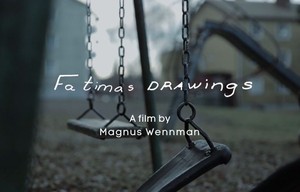
In Focus
Ukraine and Russia
Why this topic matters
War in Europe is a worrying topic for all, especially for young people. That’s why it’s so important to be proactive in the classroom and to stimulate productive conversations that help to ease the uncertainties this situation may create.
It can be difficult to know how to approach this conflict for any of us, let alone students. At the heart of this dispute is a long history of confrontation that involves multiple organisations and countries. It is easy for these terms and concepts to become overly abstract. As teachers, it's helpful to centre the human cost of war by building empathy with the people who this conflict will impact on the ground.
For younger learners especially, war can be an important moment to teach about peace, hope, cooperation, and the role we can all play in creating a better future.
Connections to the curriculum
- English Literature: Read testimonies of war, soldier’s letters from the World Wars are useful, as are war poems. Try to find examples beyond the traditional canon, such as Warsan Shire, or Ukrainian and Russian writers.
- Religious Studies: Discuss the ways that peace is valued in different religions. Ask how different religions may seek to resolve conflict.
- Geography: Talk to students about Ukraine’s location in Eastern Europe, what countries surround it, and which ones are protected by NATO. Which countries will Ukrainian refugees escape into? What will this mean for surrounding countries?
- History: Discuss the Cold War and the history of NATO. Why did Britain help to found NATO, what were its aims then, what are its aims now?
- Politics: Set up a model UN, how could different countries respond to resolve the conflict?
- Economics: Discuss the economic cost of war. How will war and economic sanctions impact the Russian economy?
How to approach it
Learning: give a sense of history
This conflict cannot be understood without historical context. It is influenced by over 100 years of territorial disputes, war and economic competition that has often involved all of Europe. In particular, students should understand what the Cold War was and, after it ended, how Ukraine became an independent country. Next, it is important to understand what NATO was in the Cold War, what it is today, and why Ukraine is currently caught between it and Russia. Follow our links below for some great lessons on introducing this concept. The Economist Foundation offers a good, short explanation for the origins of the dispute and an exercise on possible international responses. World 101 offers a useful history of NATO and a challenging resource on the civilian cost of conflict.
Balance: understand both sides
In the context of an invasion it can be difficult to find any point of balance. However, we should not allow discussion of conflict to become too one-sided. Peace and conflict resolution is founded on mutual understanding, where opposing groups listen to one another and develop solutions together. It is now obvious why Ukrainians may fear Russia, but it is important to note Russia’s fear of NATO expansion so close to its borders. The easiest thing to do here is to mention possible motivations on either side and then use this as a prompt for the discussion of potential solutions. You could ask: What could have been done before this crisis to reduce tensions? What should be done now? There won’t be easy answers to these questions, but it is important to demonstrate that the first steps to a resolution are based on understanding and discussion.
Empathy: highlight individual stories
War is never heroic nor glamorous. The tragedy is that almost all of those involved are against it. Peacebuilding is about understanding that there are rarely positive outcomes to war and that non-violent solutions should always be preferred. A powerful way to demonstrate this is by hearing the testimonies of those affected by war. Literature and media resources are really useful here. Follow the link below for the short film ‘Fatima’s Journey’ that documents the experience of a young Syrian refugee in her own words. Accounts such as this show that the people experiencing and fighting wars are just like us. After this, encourage students to think about how different people in Ukraine may be feeling. How do the Ukrainians fleeing Kiev feel? What about the Ukrainian Russians in eastern, rebel held territory? What do the Russian soldiers and their mothers at home feel? What about the Ukrainian citizens getting called to arms?
Action: guide discussion towards solutions
However dark this situation is, it offers the opportunity to really highlight the aspirations students have for a better world. It’s easy to get bogged down with discussion of pragmatic solutions like the appropriateness of sanctions or military intervention. Allow students to be as imaginative as they want. This is especially useful for younger children if discussion of the invasion may seem too complicated. Ask: if they had to build a peaceful world how would they do it? What does being peaceful mean to them? How do they resolve arguments in their own lives? The huge environmental, economic and human cost of war also draws attention to what we wish global efforts could focus on instead. Ask: how would they use all the resources and money spent on war differently? This is the time to talk about all that can be achieved through global cooperation and empathy. Find below the Peace Education Networks’ ‘Teach Peace’ pack for excellent primary-level resources on the benefits of peaceful cooperation and the challenges of bringing it about. These can easily be adapted for older students.




